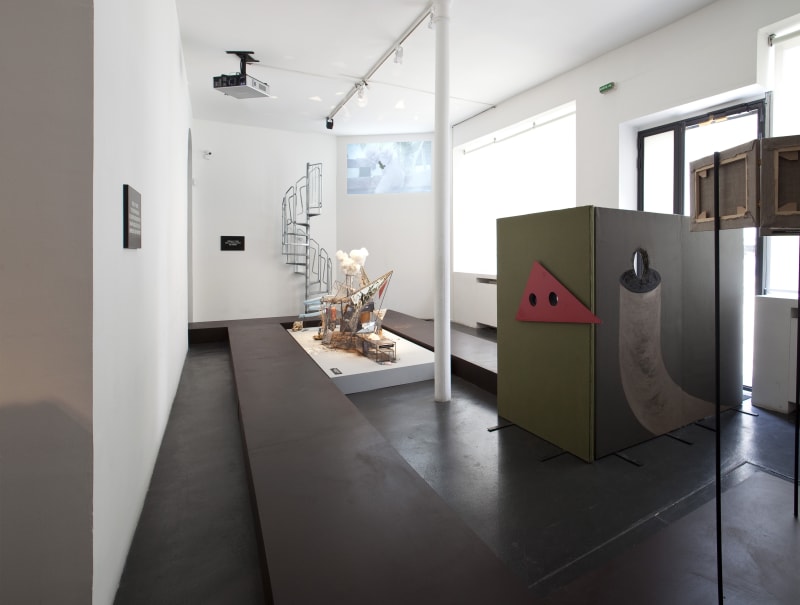The Nathalie Obadia Gallery is very pleased to present Laure Prouvost’s first solo exhibition in France.
Winner of the prestigious Turner Prize in 2013, and the first French artist ever to have been awarded this prize, Laure Prouvost, who is based in London, will present a group of new works in the same vein as the prize-winning piece Wantee (2013) which tells the story of her fictional grandfather, a friend of Kurt Schwitters’, who is supposed to have mysteriously disappeared while digging a conceptual tunnel to Africa, and of her video Grandma’s dream, (2013) in which Laure Prouvost immerses us in the imaginary world of her likewise fictional grandmother.
As a continuation of these two major works, the artist occupies the gallery and invites us into the Visitor Center, built by her grandmother and grandchildren in honor of her husband and grandfather, still to this day, missing. Visitors follow the path of the exhibition as indicated by a platform which leads them toward installations, tapestries, paintings, videos and sculptures, plunging them into an enveloping experience of sound and light. Two of the tapestries, made using collages by the artist, are animated through a system using film projection; a spiral staircase invites the visitor to climb upwards toward a video. Panels act as markers indicating the route to be taken step-by-step. SIGN paintings deconstruct the exhibition space and suggest an alternative ideal arrangement, while the video Burrow Me invites us to follow the traces of a thrilling breakaway.
Viewers become accomplices when they enter this concocted museum and, in so doing, pay homage to the missing grandfather. The artist questions the visitor about the imprecise boundaries that separate reality from fiction, to better give him/her a central presence in the reception of her installations. By proposing a particularly innovative, singular and organic body of work, Laure Prouvost develops a coherent and penetrating narrative in her work using fantasy and humor, amongst other things.
An archivist of images, objects, words, crafts, fictions and documents, she captures the daily flow of images and texts that assail us, in order to isolate the extraordinary associations and combinations that will specifically serve her stories and the chronicle of her work in general. Through a rough and fairly unscrupulous approach to the principles of translation, a disconcerting facility for dealing with notions of appearance, hypothesis and ambiguity in the bogus myths she offers us, along with the suggestive idea that a drama, breakdown or failure is always possible (does anyone know if the grandfather will ever return?) Laure Prouvost methodically constructs a substantial and indispensable body of work.
Although she plays with the effects that these incidences and accidents provoke, the very real perspective of an ideal world can be glimpsed in the generosity and the uncontrived fantasy and exhilaration that she brings to her work.

